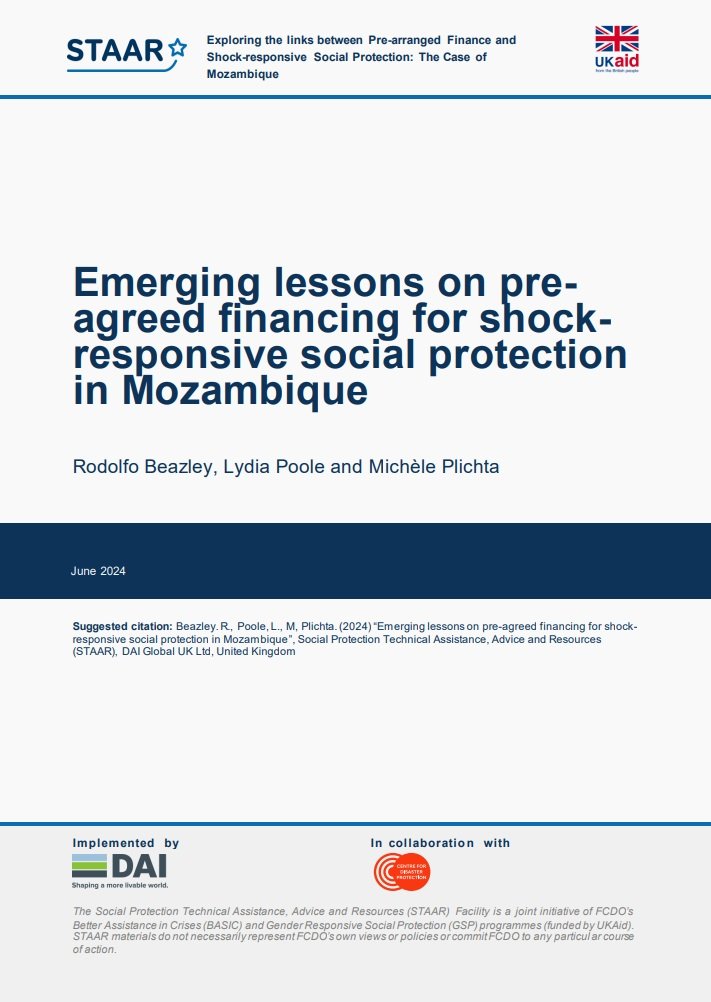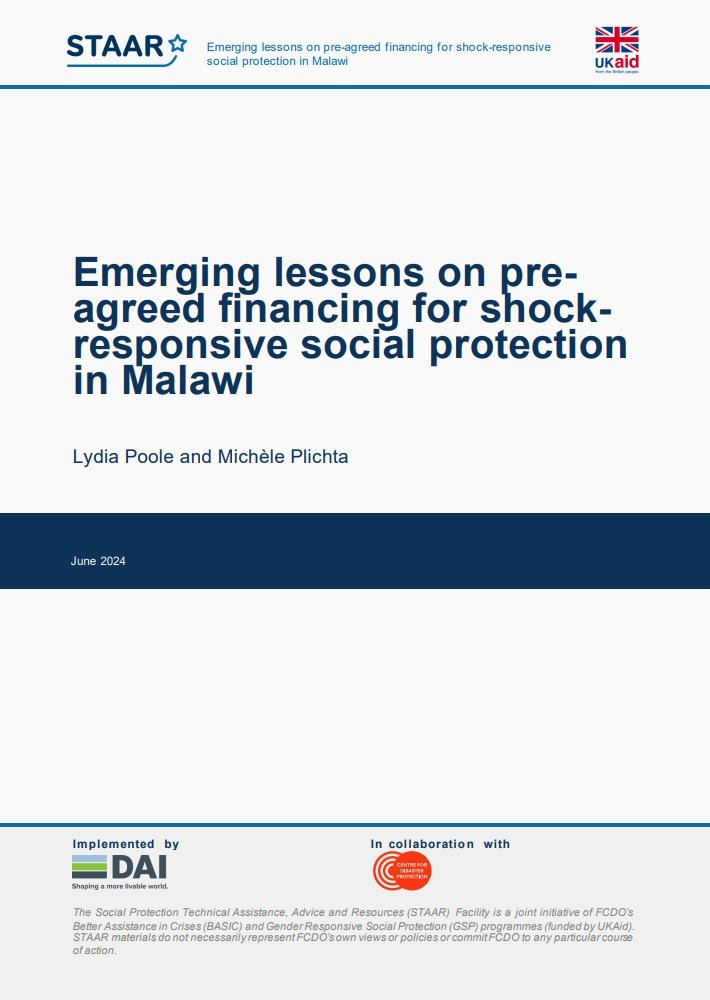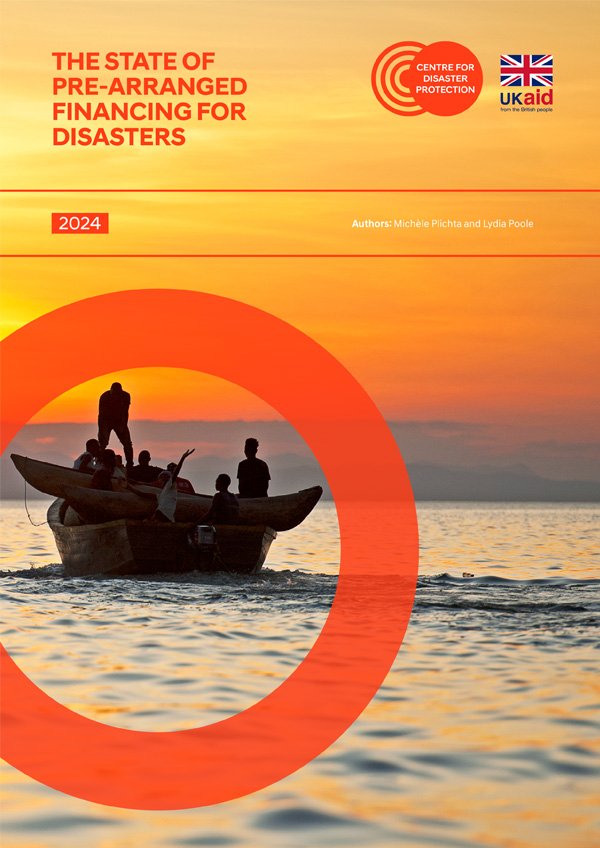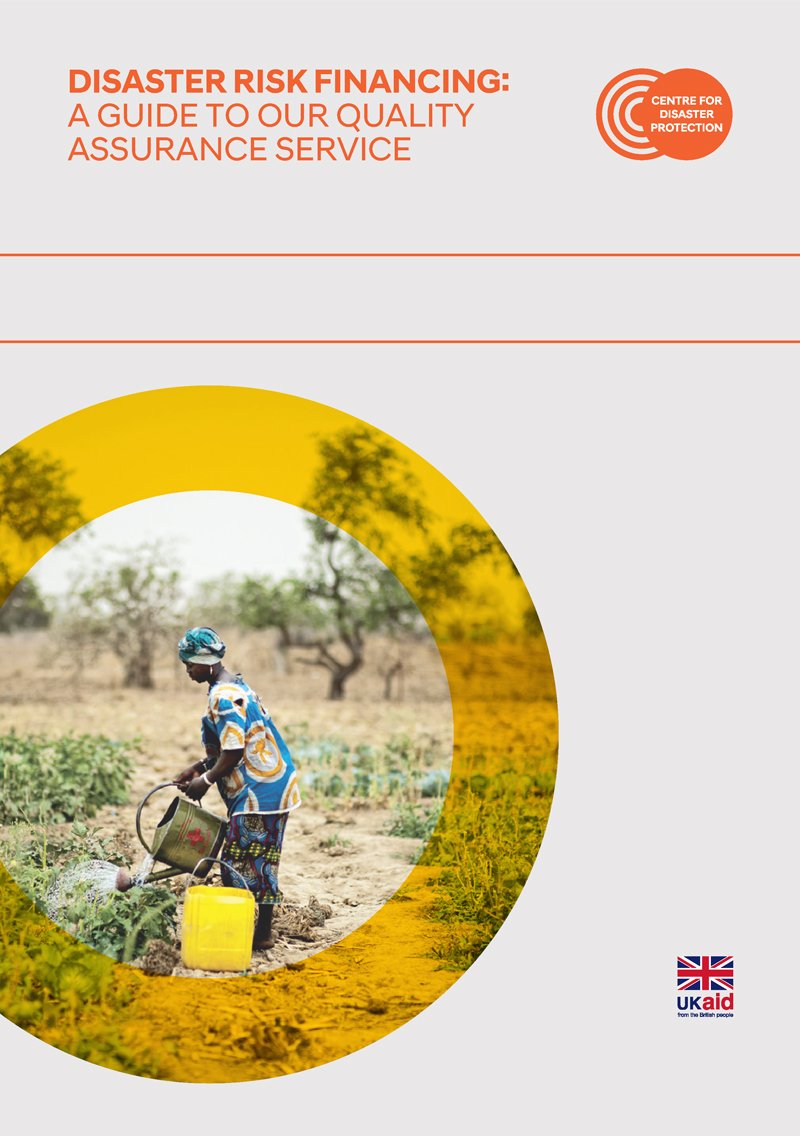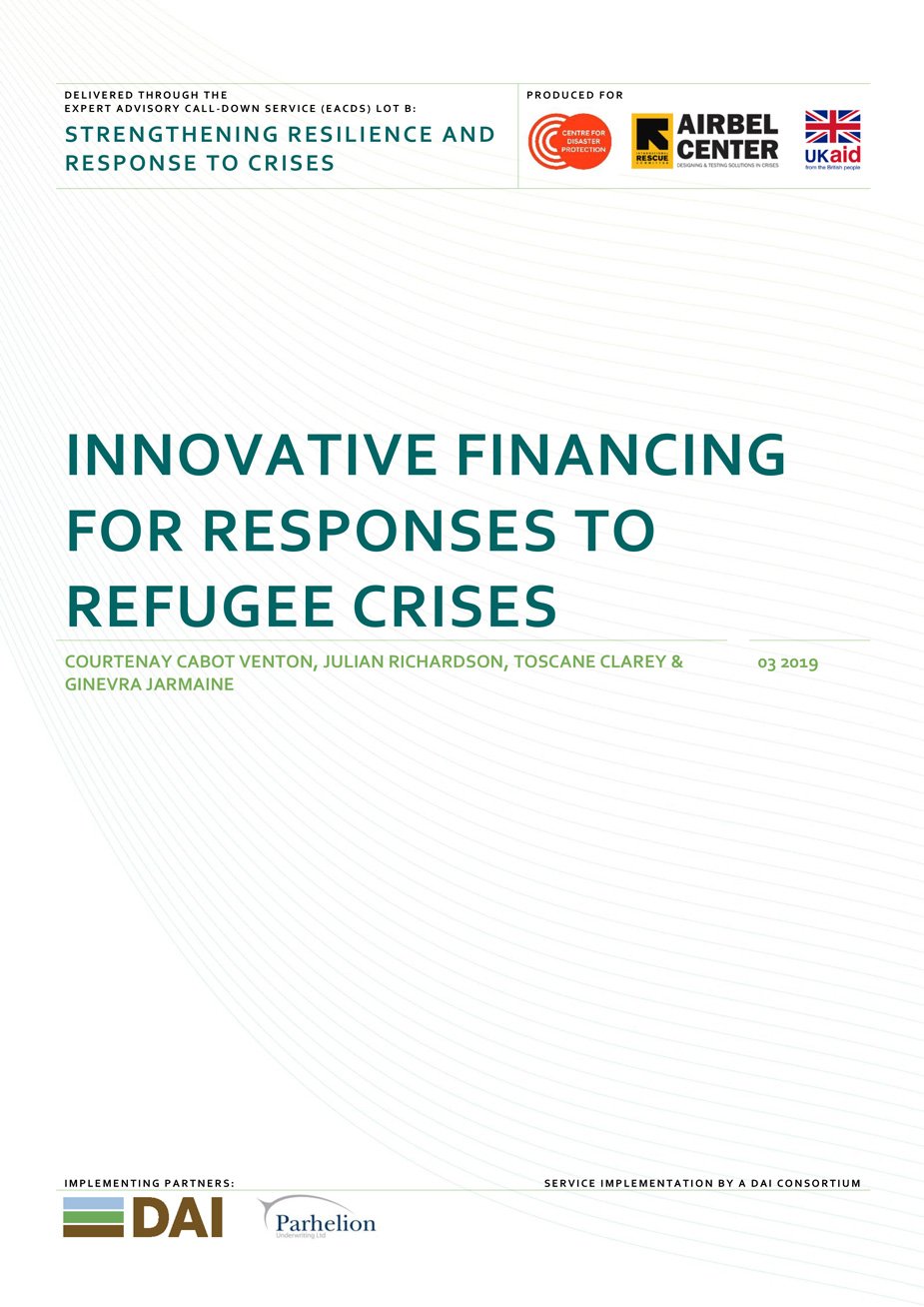MEASURING THE CRISIS PROTECTION GAP: A SUMMARY OF RESEARCH EXPLORING TECHNICAL APPROACHES FOR ESTIMATING GLOBAL CRISIS PROTECTION COSTS

The number of people whose lives are threatened by crises is increasing and current responses are inadequate and inefficient. Pre-arranged financing is a critical component in improving crisis response. Therefore, understanding the gap between crisis financing needs, and how much is pre-arranged, could have a wide range of benefits. This report synthesises research exploring the feasibility of producing quantitative estimates of the costs of crisis protection across a variety of geographies and crisis types. Based on this research it presents a conceptual framework and provides demonstration analyses. The conclusions shine a light both on how it is increasingly possible to generate forward looking estimates of crisis protection gaps, what challenges remain and the benefits of overcoming these challenges.
RELATED PUBLICATIONS
This guidance note has been developed to help the increasing number of countries and organisations that are considering or using pre-arranged financing instruments but are unsure how to approach Value for Money (VfM) analysis. The note aims to provide the reader with an overview of VfM and how it relates specifically to pre-arranged financing, as well as presenting a flexible framework the Centre has developed to approach the process of conducting VfM analysis.
The content is mainly based on the Centre’s experience of supporting national governments and international agencies with VfM analyses . It also captures lessons from other published VfM studies, and perspectives gathered in interviews with people who use and develop similar studies.
The High-Level Panel on Closing the Crisis Protection Gap formed in January 2024, comprising 20 expert members from across sectors and geographies, united by the conviction that national and international crisis, climate and development financing architectures are at a critical juncture. This report delivers the High-Level Panel on Closing the Crisis Protection Gap’s call to action - that now is the time to comprehensively rethink how the world financially prepares itself for and responds to crises. The Crisis Protection 2.0 report outlines ten strategic recommendations and an ambitious roadmap for the next decade.
This study, conducted by the Centre for Disaster Protection in collaboration with the Social Protection Technical Assistance, Advice, and Resources (STAAR) Facility, investigates the potential opportunities, benefits and risks when linking disaster risk financing (DRF) and shock-responsive social protection (SRSP) in Malawi. The report contributes to a broader study that includes research across three country case studies (Jamaica, Malawi, and Mozambique) to consider the opportunities, potential risks, and benefits of channelling disaster risk financing instruments through national social protection systems. The focus of this report is Mozambique.
This study, conducted by the Centre for Disaster Protection in collaboration with the Social Protection Technical Assistance, Advice, and Resources (STAAR) Facility, investigates the potential opportunities, benefits and risks when linking disaster risk financing (DRF) and shock-responsive social protection (SRSP) in Malawi. The report contributes to a broader study that includes research across three country case studies (Jamaica, Malawi, and Mozambique) to consider the opportunities, potential risks, and benefits of channelling disaster risk financing instruments through national social protection systems. The focus of this report is Malawi.
This study, conducted by the Centre for Disaster Protection (hereafter, the Centre) in collaboration with the Social Protection Technical Assistance, Advice, and Resources (STAAR) Facility, investigates the potential opportunities, benefits and risks when linking disaster risk financing (DRF) and shock-responsive social protection (SRSP). The report contributes to a broader study that includes research across three country case studies (Jamaica, Malawi, and Mozambique) to consider the opportunities, potential risks, and benefits of channelling disaster risk financing instruments through national social protection systems. The focus of this report is Jamaica.
This study, conducted in collaboration with the Social Protection Technical Assistance, Advice, and Resources (STAAR) Facility, addresses gaps in evidence on the potential to integrate disaster risk finance (DRF) and social protection systems. The research includes three case studies – Jamaica, Malawi and Mozambique. The study puts forward six lessons and 12 recommendations for donors interested in supporting this agenda.
With growing fiscal constraints, governments and development partners face increasing pressure to maximise the impact of every dollar spent. To address this, the UK Government Actuary’s Department and the Centre for Disaster Protection developed an analytical framework to evaluate the cost-effectiveness of various instruments offered by international financial institutions. This working paper presents a framework that compares contingent loans, grants from multilateral development banks, catastrophe bonds, and insurance provided through regional risk pools. The analysis reveals that while some instruments are more cost-effective for frequent events, others perform better for less frequent, high-impact shocks.
As the toolkit for pre-arranged financing expands, it is becoming increasingly challenging for governments to determine which instrument, or combination of instruments, best meets their needs. There is no silver bullet or single ‘best’ PAF instrument. To help governments and international partners better prepare for disasters, this report offers an in-depth assessment of pre-arranged financing tools using seven key criteria for ensuring pre-arranged financing reduces the human and financial costs of disasters.
The State of Pre-arranged Financing for Disasters 2024 is a unique source of data and analysis on the level of effort of international development donors to support a shift towards arranging financing for disasters, before shocks happen. In its second year, the Centre’s annual analysis of trends and patterns in international development financing for pre-arranged financing for disasters also presents the latest available data on coverage and payouts provided by these instruments.
This insight paper aims to support policymakers and practitioners as they seek to scale up financial protection against climate-related shocks through sovereign insurance solutions. It explores the complexities of international premium support and identifies core problems with current approaches to the allocation and design of premium subsidies. It proposes some basic but vital shifts needed in the way premium support is designed, allocated and provided to create a more inclusive, transparent and sustainable approach.
A Year in Review is the Centre’s first published annual report. It details our progress and the challenges we’ve encountered, and showcases our impact from July 2023 to June 2024.
This working paper asks what is required for social protection systems to deliver timely, predictable, well-targeted and cost-effective shock response to disasters. Currently, international support for two key elements – namely, investments in shock-responsive social protection and securing pre-arranged funds for shock response – are growing. The paper, however, argues that a third, linked element is necessary: the need for governments to clarify a shift in the social contract through reliable disaster-contingent public policy and for international actors to align behind this objective.
As part of the Centre for Disaster Protection's support to the World Bank Sahel Adaptive Social Protection Program (SASPP), the UK-funded Sahel Shock Response Programme seeks to develop a baseline of in-depth analysis on the social protection and disaster risk financing (DRF) landscape in the Sahel region. This is the first in a series of diagnostic reports aimed at informing the design and programming of the Centre’s support to the SASPP.
Available in English and French.
The number of people whose lives are threatened by crises is increasing and current responses are inadequate and inefficient. Pre-arranged financing is a critical component in improving crisis response. Therefore, understanding the gap between crisis financing needs, and how much is pre-arranged, could have a wide range of benefits. This report synthesises research exploring the feasibility of producing quantitative estimates of the costs of crisis protection across a variety of geographies and crisis types. Based on this research it presents a conceptual framework and provides demonstration analyses. The conclusions shine a light both on how it is increasingly possible to generate forward looking estimates of crisis protection gaps, what challenges remain and the benefits of overcoming these challenges.
This note intends to shift the discussion on pandemic and epidemic risk finance to a practical approach about the benefits of applying a disaster risk finance (DRF) lens to new financial mechanisms as they are developed and deployed. It outlines key trends of financial flows toward outbreak response and identifies relevant emerging initiatives and opportunities to help governments scale up pre-agreed finance.
Accountability is a core principle for making Disaster Risk Finance (DRF) work for risk-affected people. Although DRF actors are widely committed to this, there is not yet a shared understanding of what accountability means and how it should be applied. This guidance note is therefore intended as a common framework to support practical approaches to meaningful accountability across the sector, with the aim of assuring financing that is in the best interest of the at-risk communities that it seeks to serve. It can be used by anyone involved in DRF, including those promoting, designing, delivering and supporting DRF.
This guidance note provides an overview of the Centre for Disaster Protection’s quality assurance service—a free-to-use and impartial service that provides governments, donors, multilateral organisations, and NGOs expert advice on the design and implementation of disaster risk financing projects.
Available in English, French, German and Arabic.
This guidance document offers practical steps on how to capture lessons from DRF initiatives, providing an opportunity for real-time reflection and feedback for those designing and implementing DRF systems, as well as key partner organisations. The guidance is designed to help capture and communicate learning on what is working well, which assumptions are holding true (or not) and what needs to be adjusted or changed. This guidance builds on and complements the Centre’s ‘7 Keys to Unlock Effective DRF’. Process learning is particularly relevant to the characteristic of constant improvement – embedding scrutiny and learning into
DRF initiatives to ensure quality and effectiveness.
Human-induced climate change will continue to cause losses and damages, with vulnerable developing countries and communities that have contributed least to the climate crisis bearing the brunt of its consequences. Loss and Damage is the third pillar of the international climate regime in the 2015 Paris Agreement, alongside mitigation and adaptation.
In order to play a well-targeted and effective role, it is important to understand the applications and limits of Disaster Risk Finance as a response to climate-induced losses and damages. This paper explores how DRF instruments are being framed and understood within the panorama of Loss and Damage policy and finance agendas, highlighting areas of contention and sensitivity.
As disaster risk financing (DRF) matures, it needs to better understand and implement accountability—particularly towards the at-risk people it seeks to benefit. There is growing awareness of this, but application remains nascent. This working paper presents a framework for understanding accountability in this context, as well as an overview of implementation in order to stimulate and inform progress.
Disasters have the biggest impact on those that are least able to protect themselves from them: vulnerable people. In most cases the most vulnerable are also the poorest in a society. This guidance note sets out some questions that can be asked during programme design to help ensure that DRF is most directed to those who are least able to withstand shocks.
This guidance note offers practical guidance on contingency planning and triggers for preparing before a disaster strikes to support a faster, more coordinated, and ultimately, more effective response.
There is currently little in the way of rigorous evidence of impact or established ‘best practice’ in DRF. It is important, therefore, that we engage in scrutiny, be open to learning and willing to be held accountable. This guidance note sets out practical ways to ensure quality, independent scrutiny and improved learning in your DRF initiatives.
Ensuring the inclusive participation of people in DRF is essential but challenging. It builds trust and empowers the public to demand greater accountability of governments and reward them for reliable disaster support. This guidance note gives practical advice on consulting and involving communities in decision-making that impacts their lives.
A DRF programme can be sound from a technical angle—but when it fails to consider the broader environment, its impact is diminished. This publication explains the importance of thinking strategically and sets out four principles for taking a strategic approach, with practical advice and resources.
This insight paper examines the challenge of handling basis risk in disaster risk financing systems. It argues how the use of data and management of basis risk has the potential to significantly increase the neutrality and impartiality of humanitarian decision-making, offering a new type of financing and increased accountability.
This paper outlines the current state of anticipatory action and discusses some of the existing evidence on its impact. It is not intended to provide a comprehensive literature review or a meta-analysis of the impacts of early warning or early action initiatives. Rather, it presents some examples of different types of impact associated with a range of anticipatory action in developing countries. This is in recognition of the diversity of anticipatory action mechanisms and variety of activities being implemented in different contexts, as well as the range of studies that have been carried out focusing on different outcomes. The paper also highlights evidence gaps and points out some of the methodological challenges in measuring impact.
The growing scale, duration and impact of refugee crises requires innovative approaches to financing that are more efficient, more effective, more equitable, and more sustainable.This report – produced after two Innovation Labs which convened experts spanning the finance, insurance, humanitarian, development and policy fields – lays out a vision for new systems of financing to ensure funds are available rapidly and reliably to respond to the changing nature of global refugee crises.
The growing scale, duration and impact of refugee crises requires innovative approaches to financing that are more efficient, more effective, more equitable, and more sustainable.This report – produced after two Innovation Labs which convened experts spanning the finance, insurance, humanitarian, development and policy fields – lays out a vision for new systems of financing to ensure funds are available rapidly and reliably to respond to the changing nature of global refugee crises.
$3 billion was allocated to the CRW in IDA18, equivalent to a third of IDA’s total spending on crisis financing. This paper and accompanying policy brief detail how the CRW has been used to date, and identifies a number of concrete ways of improving its performance.



